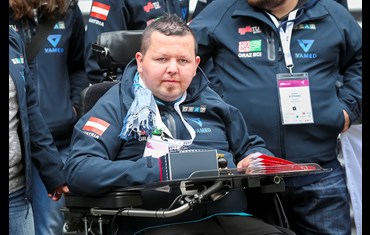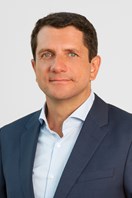VAMED supports the first international bionics competition for athletes with severe disabilities
10/9/2016
Zurich / Vienna (OTS) – The first international bionics competition took place in the sold-out SWISS Arena in Zurich this weekend. With several thousands of spectators cheering, 74 athletes with severe physical handicaps competed on Saturday in six disciplines, using the latest prosthetic technology and robot-based assistance systems. 25 countries, including Austria, were represented at the world premiere, which received much attention all over the globe.
The event was supported by the world’s leading healthcare provider, VAMED. With 15 internationally recognized rehabilitation clinics in Austria, Switzerland, and the Czech Republic, VAMED is an innovator and pioneer in the development of new approaches in rehabilitation. A combination of traditional and new technologies has been used for many years in rehabilitation. These technologies include robotics supporting the patients in rehabilitation.
Exchange between businesses, medicine, and science
By way of sporting competitions, the organizer, ETH Zurich, primarily wants to promote the exchange between science, medicine, and business, and to further reduce the barriers between people with special needs, the public, and the technology developers.
One of the athletes from Austria was Gerhard Kleinhofer, former sports director of the natural track lugers’ national team. Kleinhofer, nominated by VAMED Therapy Center in Kapfenberg for the team Mirage 91 Graz University of Technology, has been suffering from severe motor restrictions since a massive stroke two years ago, and like most of the participants in the field, he can move neither his arms nor his legs. At the Cybathlon, he competed in the “Brain-Computer Interface Race” (BCI), where he controlled a computer avatar solely with the power of his mind.
Sporting event providing important insights for neurological rehabilitation
In BCI racing, pilots need to think specifically about how they move their hands or feet, sing, or do mental arithmetics. The brain waves thus triggered are measured and thus steer a computer figure through a virtual course”, said Professor Gernot Müller Putz, who headed the student team of the Technical University of Graz. In the future, brain-computer interfaces will make it possible to operate an electric wheelchair, a speech processor, or other equipment without pressing a single key.
“In neurological rehabilitation itself, BCI training can help, by selective stimulation techniques, to train paralyzed limbs systematically, until the affected person can use them functionally again. We have nominated Gerhard Kleinhofer, because he loves competitions and as a former top athlete still has an incredible sense of movement. This is very good for him”, says Chief Physician Dr. Matthias König, Medical Director of the Neurological Therapy Center Kapfenberg (NTK).
Latest prosthetic technologies for orthopedic rehabilitation
New robotics technologies that supported the athletes at Cybathlon are already being used at VAMED’s rehabilitation clinics for orthopedic rehabilitation. In Zurich, the technologies shown, formerly known only from science fiction, took the step from imagination and the laboratory into reality.
Pilots with complete leg paralysis overcame an obstacle track using exoskeletons, athletes with spinal cord injuries competed in bike racing through electrical muscle stimulation, and sportspeople who had lost extremities due to illness or an accident participated in skill competitions with robotic hands or leg prostheses.
Like the Olympics and Paralympics, the Cybathlon is intended to take place every four years in the future.

